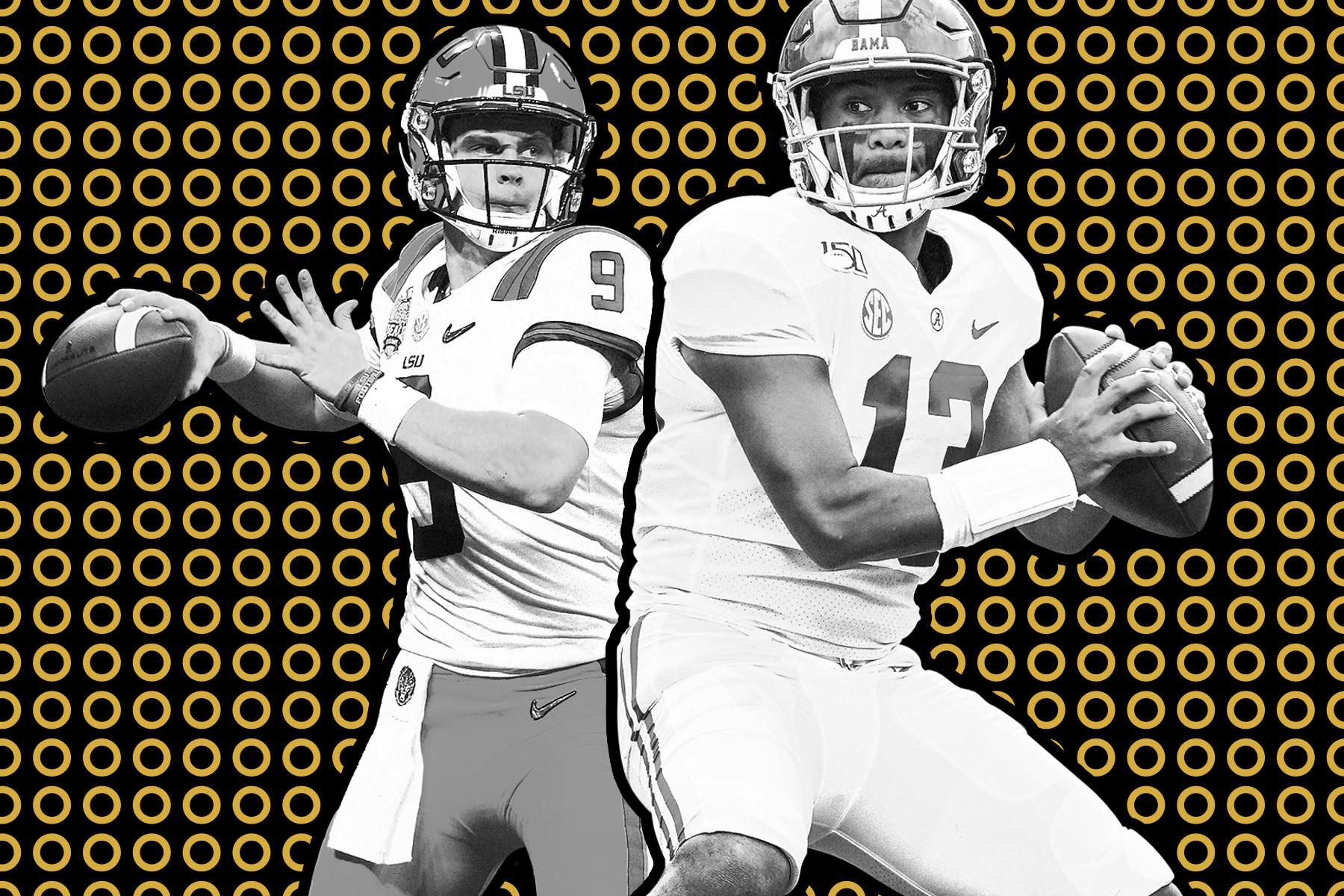As each club is eliminated from the postseason, The Ringer will examine what went right, what went wrong, and where the franchise could go from here. Today it’s the San Francisco 49ers, who fell 31-20 to the Chiefs in the Super Bowl, but have a bright future ahead.
What Went Right
San Francisco’s rebuild. The 49ers became just the third team in NFL history to win four games or fewer one year and then make the Super Bowl the following season. Three years ago, 49ers owner Jed York hired head coach Kyle Shanahan and general manager John Lynch to matching six-year contracts. The identical deals were unusual at the time—coaches and GMs are not usually considered on the same power level within an organization, but the 49ers’ Lynch-Shanahan combo is as close as it gets. The results speak for themselves: Shanahan and Lynch took over a team that went 2-14 in 2016, slogged to a combined 10-22 record in 2017 and 2018, and then exploded to go 13-3 in 2019 and capture the no. 1 seed in the NFC.
Shanahan has done this by designing perhaps the league’s most versatile offense, able to execute seemingly any play out of any formation with anyone on the field. The 49ers’ no. 1 receiver is their tight end George Kittle, who established himself as the league’s best tight end option since peak Rob Gronkowski. Kittle is dominant in the passing game (he led all players this season with 3.1 yards per route run by Pro Football Focus) but might be even better as a blocker (of the 82 tight ends to play 100 or more snaps in 2019, Kittle had the fourth-highest blocking grade by PFF). Unsurprisingly, Kittle was the highest-graded player overall on PFF in 2019 and was the highest-graded tight end the site has tracked. Rookie receiver Deebo Samuel was San Francisco’s go-to player in the Super Bowl. He can change a game as a receiver, a runner, or even a blocker, demonstrating a rare skill set for such a young player.
The 49ers’ ground game was not as prolific as Baltimore’s, which broke the single-season record for rushing yards and yards per attempt in the Super Bowl era, but the 49ers were still dominant this year. Running back Raheem Mostert led all qualified running backs in yards per carry (5.6), and Matt Breida ranked no. 6 (5.1). That success was largely due to the 49ers’ blocking: Mostert and Breida were the top two running backs in yards before contact per attempt, and running back Tevin Coleman ranked no. 9. In San Francisco’s win over Green Bay in the NFC championship game, Mostert became the first running back to score four touchdowns and rush for more than 200 yards in a playoff game. San Francisco’s backs had a lot of space before defenders could touch them, and Mostert, Breida, and Coleman are the latest beneficiaries of Shanahan’s system.
With such a strong ground game, quarterback Jimmy Garoppolo executed an offense that was the league’s best in short passing. Garoppolo’s passes traveled just 6.5 yards downfield on average this year, tied for second lowest in the league. But the 49ers led the league in average yards after the catch (6.6). The 49ers didn’t throw downfield often, but when they did, Shanahan designed plays that gave his team room to run. The result was a team that could grind opponents to dust with their run game, but also could stay aggressive with unorthodox deep attacks to Kittle or even fullback Kyle Juszczyk.
San Francisco’s offense was an excellent marriage with its defense, which underwent one of the biggest one-year turnarounds of any team in 2019. Last year, the 49ers picked off two passes, the lowest for any NFL team since World War II. This year, the 49ers picked off three passes in Week 1 (though playing Tampa Bay quarterback Jameis Winston helps). Rather than panicking in the offseason and trying to add more secondary help, Lynch, a former safety, doubled down on the pass rush. He traded for Kansas City pass rusher Dee Ford and drafted Ohio State’s Nick Bosa with the no. 2 overall pick, giving the 49ers five first-rounders on their defensive line. The unit was the league’s best at getting pressure with a four-man rush. San Francisco produced one of the league’s highest pressure rates with one of the lowest blitz rates.
The 49ers are built to protect leads and grind down modern football teams. Their running game drains the clock, and their pass rush makes it hard for trailing teams to play catch-up. Shanahan will face plenty of questions about his in-game decision-making in the Super Bowl, but the team he and Lynch have built will be solid for years to come. The modern model for team building was the Trust the Process™ full-scale rebuild that involved razing a team to the ground and then building it back up. The Philadelphia 76ers, Cleveland Browns, and Houston Astros have all used that model, but none of them are in as good a position. The 49ers have followed a different path of a long-term commitment to a fairly equal partnership between a coach and a general manager. Their remarkable turnaround in just three years may change how other organizations, well, organize.
What Went Wrong
Not much, though losing the Super Bowl is painful. The obvious scapegoat for this season is Shanahan’s in-game play-calling against the Chiefs, but the real weight will fall on the shoulders of Jimmy Garoppolo. During the two weeks leading into the Super Bowl, 49ers players became annoyed by the daily questions in media sessions about whether Garoppolo could carry the team after throwing just eight passes in the NFC championship game. But when it came time to rely on the passing game in the fourth quarter, Garoppolo failed to see open receivers, and when he did see them, he didn’t always manage to get them the ball. Twice in the fourth quarter—once when the 49ers were up 20-17 with six minutes left, and again when the 49ers were down 24-20 with under two minutes left—Garoppolo failed to deliver. The 49ers got tired of hearing people doubt Garoppolo in the last two weeks, but they’re going to hear it all offseason, too.
Free Agency
The 49ers have more than $20 million of cap space, plenty for a Super Bowl contender with most of its key players under contract. San Francisco’s major contributors who are set to become free agents are receiver Emmanuel Sanders, running backs Matt Breida and Jeff Wilson Jr., fullback Kyle Juszczyk, backup guard Daniel Brunskill, and blocking tight ends Levine Toilolo and Ross Dwelley. For a team this good, that’s about the best-case scenario. Shanahan seems to love Jusczczyk, and Sanders was a solid contributor once the 49ers traded for him, so it would make sense for the 49ers to retain one or both of them. Either way, the core of the 49ers offense are all remaining in San Francisco next year.
Their defense is mostly intact too. Safety Jimmie Ward, defensive end Arik Armstead, and cornerback Emmanuel Moseley are the 49ers’ starting defenders set for free agency. The 49ers have enough depth to withstand Armstead leaving, and may decide it is cheaper to let him go and re-sign defensive ends Ronald Blair and Damontre Moore, who both ended the year on injured reserve. The 49ers could likely retain both Blair and Moore for less than what it will cost to re-sign Armstead. Moseley could be retained, but San Francisco may look for a more reliable option at the opposite cornerback spot from Richard Sherman with almost every other defensive starting spot locked down. San Francisco has shown they are willing to be aggressive in the offseason, so they may look to solidify Moseley’s spot and the safety position if Ward leaves.
The biggest loss would be if left tackle Joe Staley retires. He’ll be 36 in August; he nearly retired three years ago, but was persuaded by Shanahan to stay onboard for the 49ers rebuild. Staley’s leadership off the field and protecting Garoppolo’s blindside on the field would be difficult to replace.
The Draft
If losing the Super Bowl was not bad enough, the 49ers sent their second-round pick to Kansas City for Ford this offseason, so the Chiefs will use San Francisco’s pick in the second round. The 49ers also traded their third- and fourth-round picks to Denver for Sanders, so the 49ers will pick at no. 31 in the first round and not again until the fifth round. That’s tough for a team that has drafted well in recent years. The 49ers could add more pass-catchers in a receiver-laden draft this year. Clemson’s Tee Higgins or Penn State’s K.J. Hamler could work for the 49ers at that spot, but San Francisco would be wise to invest in the cornerback position. TCU’s Jeff Gladney, Clemson’s A.J. Terrell, Florida’s CJ Henderson, or Alabama’s Trevon Diggs could all improve the 49ers secondary opposite Sherman.
The wisest course, however, is likely trading down. Players drafted in the first round sign five-year contracts, whereas players after that round sign four-year deals. The fifth-year option is valuable for teams to keep a good player from free agency; the 49ers may be able to sell their pick to a team hoping to trade back into the first round in exchange for multiple picks in the second, third, and fourth rounds, where San Francisco currently has no selections. If the 49ers have multiple players they like at 31, they’d be wise to move back.

